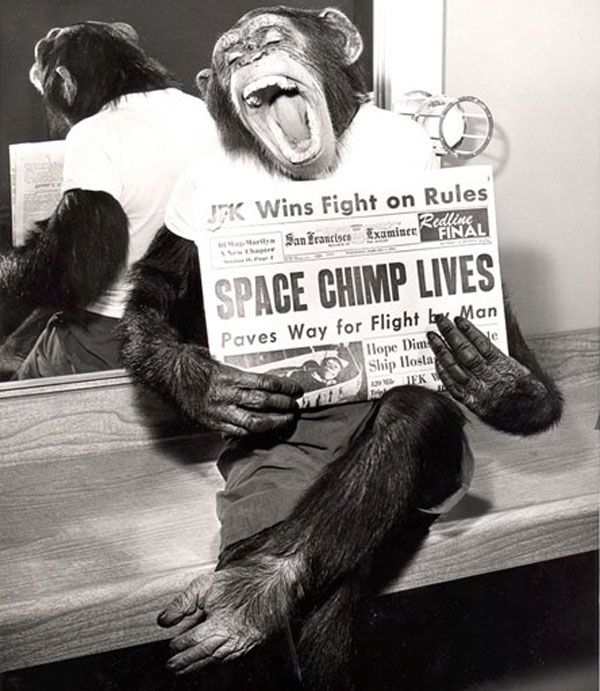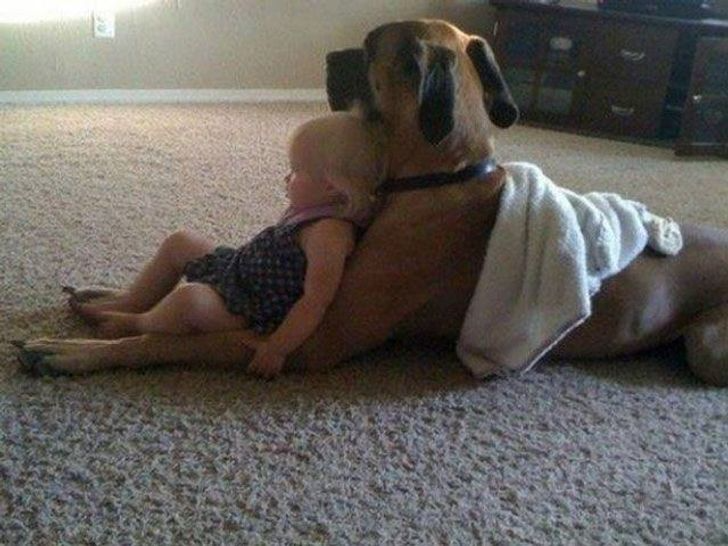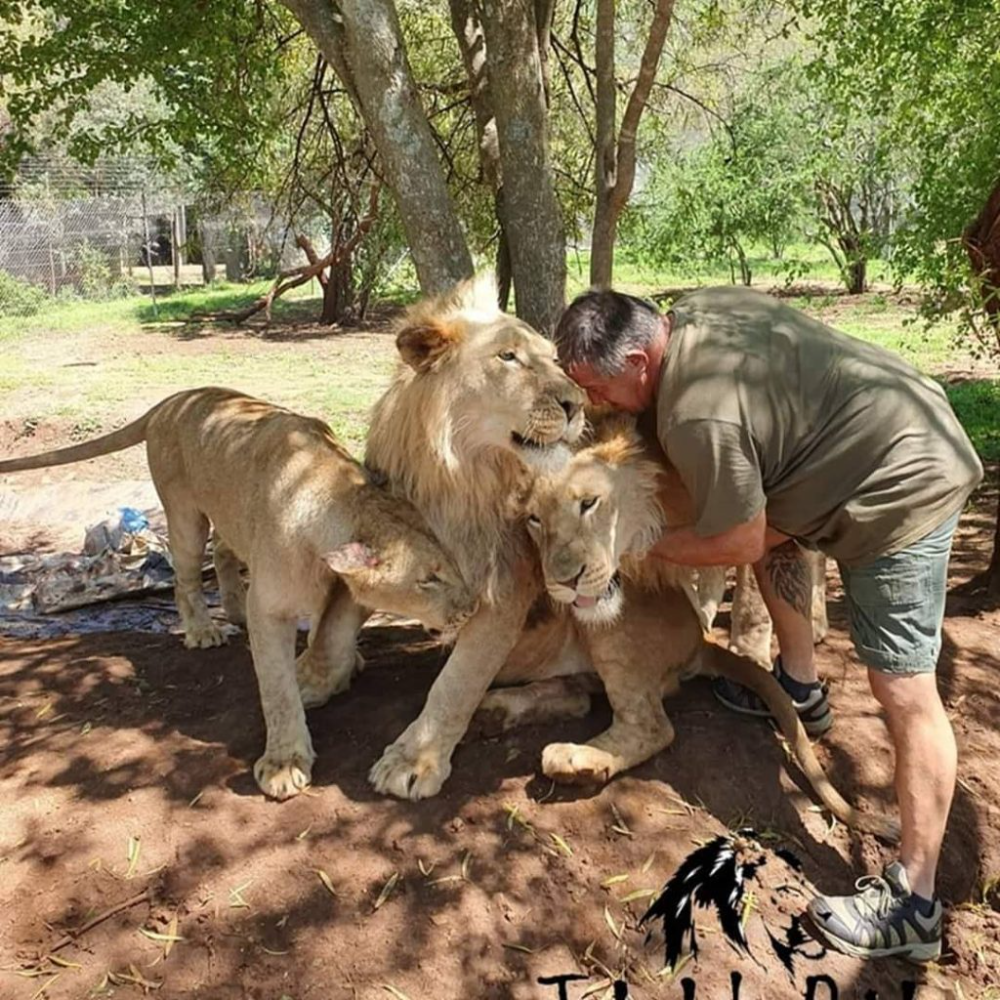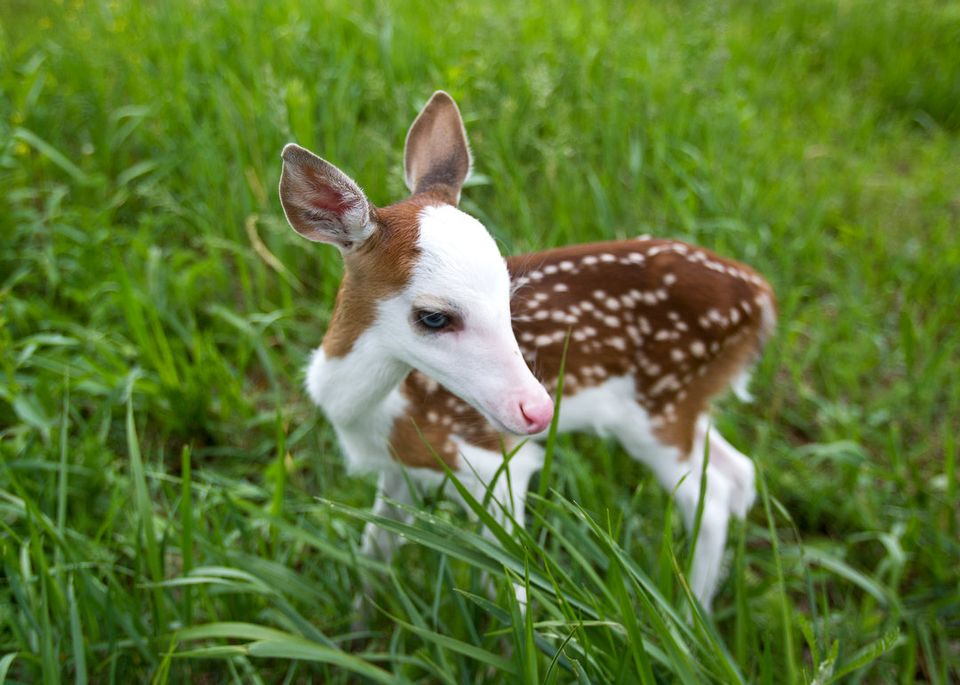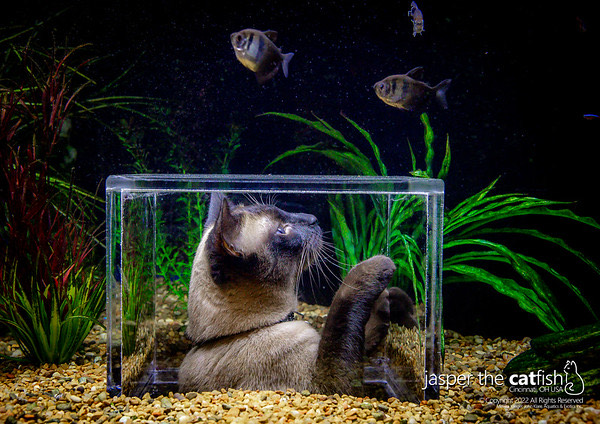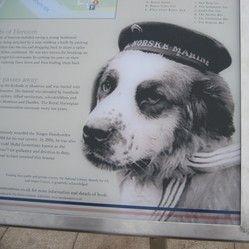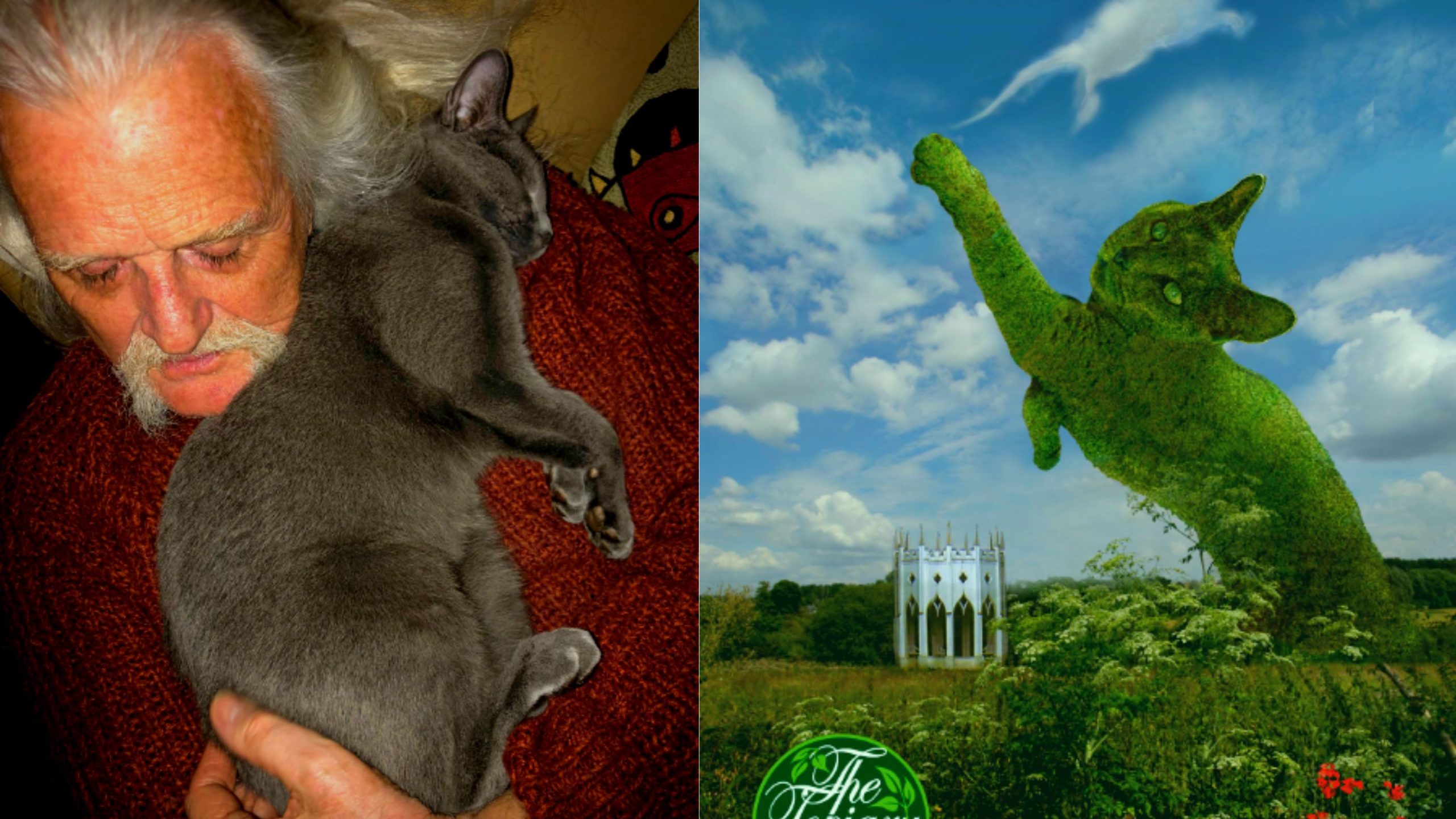Ham the Chimp was born in Cameroon in 1957 and was taken from his home by trappers to the now-defunct Miami Rare Bird Farm in Florida. That’s where the US Air Force bought him in 1959 for $457. Ham was stationed at the Holloman Aerospace Medical Center in New Mexico, where he would train for his first and only assignment.
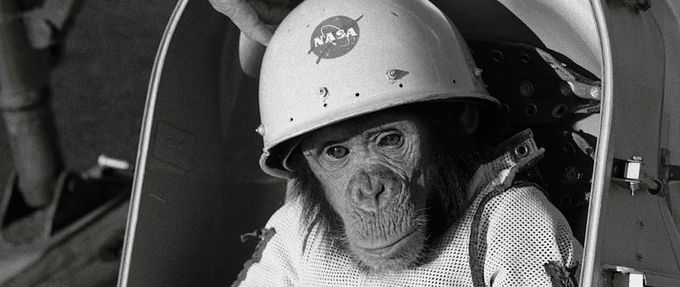
Although Neil Armstrong was the first man to set foot on the moon, his historic journey into space would not have been possible without Ham the Astrochimp. The brave chimp’s suborbital journey paved the way for humankind’s foray into space, demonstrating not only that living creatures could survive space travel, but also that mental and physical functioning could be maintained while in space.
Ham became the first chimp in space on January 31, 1961. Save the Chimps pays tribute to Ham, his bravery, and his unwilling sacrifice. Everyone at Save the Chimps has a soft spot for the Space Chimps, also known as “Astrochimps.” The plight of the Air Force chimps, chimps used in early space research, and their descendants inspired our late founder, Dr. Carole Noon, to found Save the Chimps.
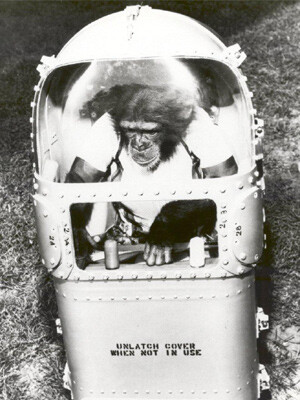
Despite the subsequent fame, this was not a volunteer mission. Ham had to be restrained in order to learn to stay still for long periods of time in the cramped capsule.
We now know that the United States Air Force used straight jackets, neck rings, and four-limb restraints to train chimps. He was taught how to operate the control panels using electric shocks. Many other chimps were trained to operate spaceships, but only two, Ham and Enos, were launched into orbit.
You can connect with our Pinterest
The Race to the Space

Ham was transferred to Holloman Air Force Base in Alamogordo, New Mexico, in July 1959, to train for space flight as part of Project Mercury. At the time, Ham was known as Chang, or #65, and was renamed after the acronym for “Holloman Aero Medical” during his spaceflight.
Ham and other young chimps, including Minnie (the mother of two STC residents, Rebel and Li’l Mini) and Enos (who would go on to become the first and only chimp to orbit the Earth), were trained to operate levers in response to light cues. After 18 months of preparation, Ham was chosen as the chimp whose life would be jeopardized in order to test the safety of space flight on the ape body.
On January 31, 1961, after several hours of waiting on the launch pad at Cape Canaveral, FL, three-and-a-half-year-old Ham was launched into space, strapped into a container known as a “couch.”
The Space Chimps’ School
Because the chimps’ trip to space would be a practice run for a future manned mission, the candidates would have to go through training similar to that of human astronauts. The chimps were subjected to g-force training as well as microgravity simulation. They were subjected to rocket sled launches, isolation training, and intelligence tests, as well as numerous medical checkups and monitoring.

In addition to testing the little-known physical and psychological side effects of space travel, the chimps would need to perform routine tasks during their flight in order to measure any effects on reaction time and motor functioning. To accomplish this, the chimps were taught to sit at machines and push and pull levers in response to sounds and flashing lights.
A Wild Ride

The flight of Ham lasted approximately 16 12 minutes. He reached a height of 157 miles above the earth at a speed of approximately 5800 mph. He was weightless for about 6 12 minutes. Despite the intense speed, g-forces, and weightlessness, Ham completed his tasks flawlessly.
Landing
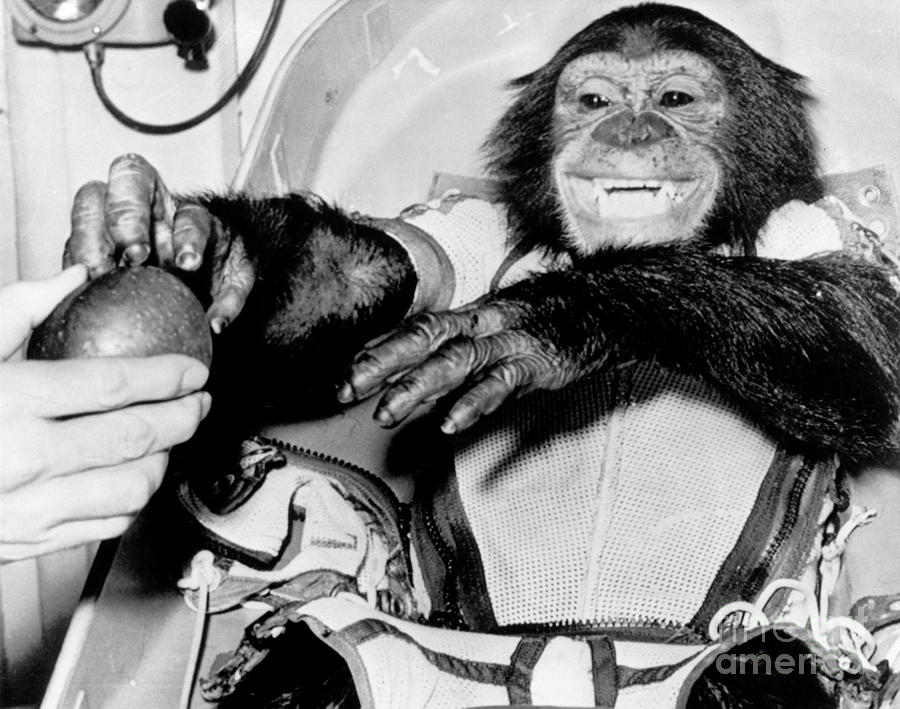
Following the flight, Ham’s capsule splashed down 130 miles from its destination and began to absorb water. A recovery ship took several hours to reach Ham, but he was miraculously alive and relatively calm considering his ordeal. When he was finally freed from the “couch,” however, he had a huge grin on his face.

Many people misinterpreted Ham’s expression as one of happiness, but it was actually one of extreme fear and anxiety. Later, through an act of defiance, that fear was demonstrated once more. Photographers were looking for another shot of Ham in his “couch.” Ham refused to return, and multiple adult men were powerless to persuade him.
Three months after Ham’s suborbital mission, Alan B. Shepard, Jr., a Mercury Seven astronaut, became the first American in space, a feat that would not have been possible if Ham had not demonstrated beyond a shadow of a doubt that humans could survive and even work in space.
The Astrochimp Ham
For a variety of reasons, Ham’s flight is remarkable. Despite the rigors of space flight and the fear he must have felt, Ham not only survived the flight, but also performed his tasks correctly. His bravery and heroism paved the way for Alan Shepard, Jr., America’s first astronaut. The most remarkable aspect of this story, however, is often overlooked in all of the writings about Ham: he was a baby.
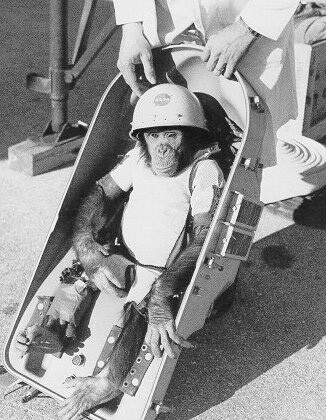
If Ham had not been kidnapped and his mother had not been murdered, he would still be nursing at the age of three and a half, reliant on his mother for survival. Humans are often thought to be smarter than chimps, but it’s difficult to imagine a human toddler performing as well as Ham in this difficult task. It reflects Ham’s personality, intelligence, and bravery.
Ham spent 17 years at the National Zoo after his historic journey before being transferred to a chimp colony at the North Carolina Zoological Park in Asheboro in 1980. For the first time since leaving Holloman Aerospace Medical Center, he was reintroduced to other chimps.
How did ham the Chimp Die
After a short career with the National Aeronautics and Space Administration, Ham the chimp, the first chimp to ride a rocket into space, died at the age of 26.
The animal died Monday at the Carolina Zoological Park, where it had spent the previous two and a half years, according to zoo officials. On January 31, 1961, Ham rode a Redstone rocket into suborbital space, more than three months before Navy Comdr. Alan B. Shepard Jr.’s suborbital flight.
Read another article about: Tira Unique Polka Dotted Baby Zebra was Born Instead of Stripes on His Body.


